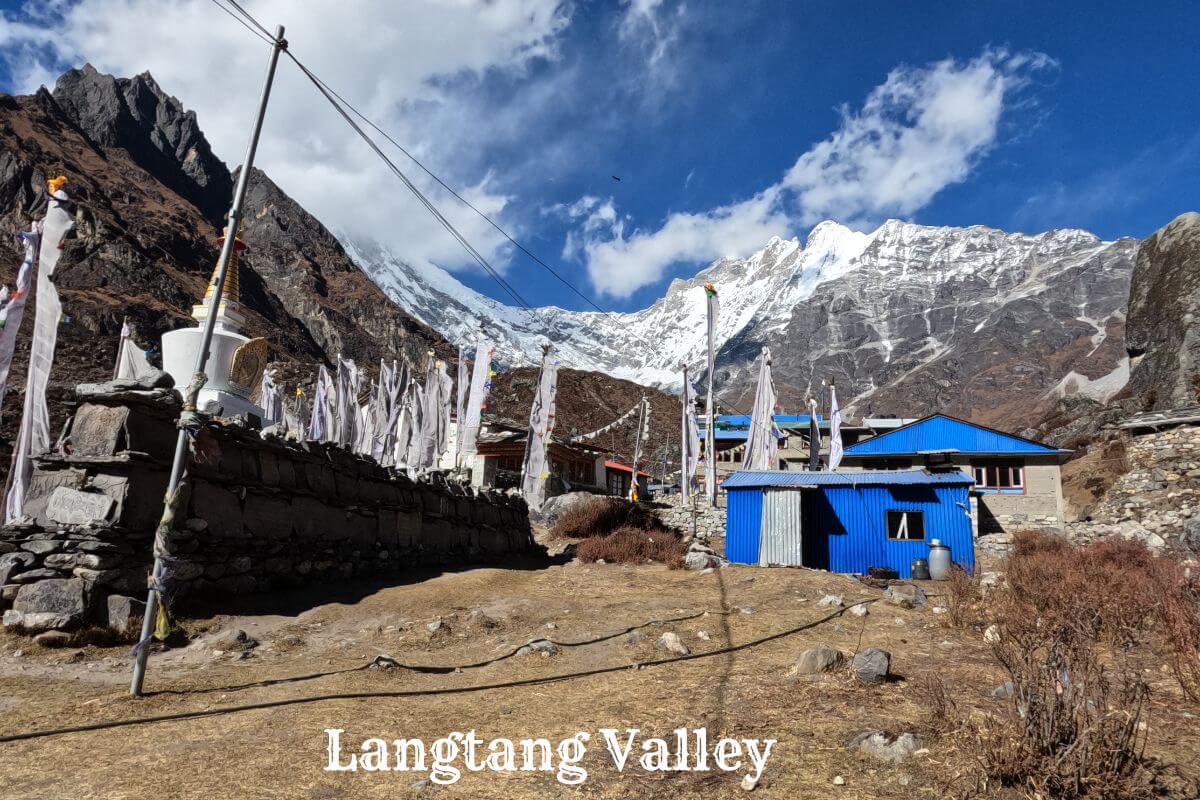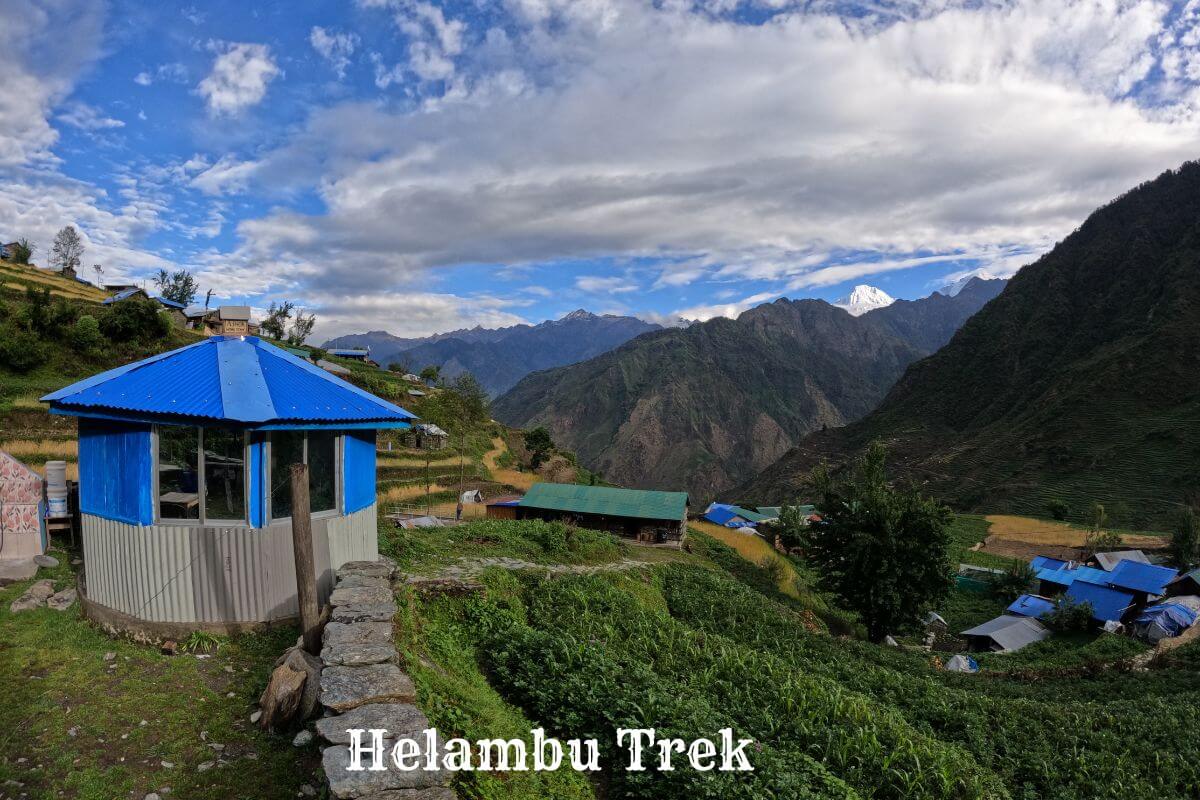Gosaikunda can be reached through two different routes, one from Langtang and the other from Helambu. Both feel totally different, but equally beautiful. This blog helps you choose the one that suits you best.
Gosaikunda Trek Route Options: Dhunche, Helambu, or Langtang
Table of Contents
Introduction: Two Scenic Gateways to Gosaikunda
Gosaikunda is one of those places in Nepal that feels both spiritual and remote. A high-altitude lake tucked deep in the Langtang region, surrounded by snow-dusted peaks and mythological stories. It’s a sacred site for both Hindus and Buddhists, and every year it draws pilgrims and trekkers who are after something quieter and more personal than Everest or Annapurna.
Most people take the usual route starting from Dhunche, but if you are the kind of traveler who likes to go off the beaten track or just wants a different kind of experience, there are two beautiful alternate routes you can take: one via the Langtang Valley, and the other through the Helambu region.
Each of these options brings its own flavor. Langtang is all about alpine valleys, glaciers, and Tamang culture, while Helambu offers forested trails, Buddhist villages, and a shorter start from Kathmandu. You can also read the Gosaikunda Trek Overview if you are just starting out and want the big picture; this is where to go first.
Gosaikunda via Langtang Valley
If you have got time on your hands and want a real mix of culture and epic mountain scenery, the Langtang route is a strong contender. You will start from Syabrubesi or Dhunche, and instead of heading straight up to Gosaikunda, you will fall into Langtang Valley first.
The trail winds through Lama hotel, past old-growth forests and rivers, and eventually brings you to Langtang village and Kynajin Gompa, which is a quiet monastery tucked in a village surrounded by towering peaks. If you have ever wanted to stand under a glacier and feel small in the best way, this is the place.
After soaking in Langtang, you loop back and start the climb up to Laurebina Pass, which connects to the Gosaikunda section of the trek.
- Total time: Around 10 to 14 days, depending on side trips and acclimatization.
- Scenic highlights: Big mountain views, yak pastures, ancient monasteries, and strong Tamang heritage.
- Difficulty: Moderate to challenging due to the length and altitude
If you want a closer look at this route with maps and a daily breakdown, then you can also read the Langtang Valley trek overview.

Gosaikunda via Helambu
If you are short on time or just want a quieter, more forested experience, the Helambu route is a great option. It starts just outside Kathmandu, at Sundarijal, and within a couple of hours of hiking, you are already in the Shivapuri National Park, far away from the traffic and noise.
This trail takes you through peaceful villages like Chisapnai, Kutumsang, and Tharepati, places where you will find Buddhist chortens, stone-paved paths, and warm, understated hospitality from the olmo and Sherpa communities. The vibe here is less “alpine epic” and more “slow, serene hills” until you get closer to Gosaikunda.
Eventually, you meet up with the main trail near Laurebina, and the landscape shifts dramatically as you gain altitude toward the lakes. It usually takes 7 to 9 days, depending on your pace and stops, to complete this trek. You will get to witness lush forests, ridge trails with wide views, Buddhist villages, and rolling hills. The trek is considered moderate but steady with a good mix of ups and downs. If you want to know more bout the trek, then read: Helambu Trek Guide.

Distance, Altitude & Difficulty Comparison
Let’s be real, both the Helambu and Langtang routes are solid choices if you are eyeing the Gosaikunda Trek, but they each hit different depending on your fitness level, schedule, and what kind of challenge you are looking for.
| Feature | Langtang Route | Helambu Route |
| Starting Point | Sundarijal | Syabrubesi/Dhunche |
| Max Altitude | 4,610m (Laurebina La) | 4,773m (Tserko Ri if extended) |
| Duration | 7–9 days | 10–14 days |
| Difficulty | Moderate | Moderate to Challenging |
If you are trying to figure out which one’s best for you, check out the Gosaikunda Trek Difficulty Level for detailed information.
Scenery & Experience Comparison
Helambu is all about chill, green hills, misty forests, and peaceful Buddhist monasteries. The trails are quieter, and you get more of a spiritual retreat kind of feeling. It’s less touristy, more reflective, perfect if you are craving some peace with your peaks.
Langtang, on the other hand, comes in hot with those glacier views, dramatic valleys, and raw, alpine beauty. It’s got a wilder, more intense energy, plus the villages here give you deep access to the Tamang and Sherpa culture ( like, seriously authentic). It’s immersive, emotional, and absolutely stunning.
Oh, and heads up, both trails eventually connect to Gosaikunda via Laurebina, so you are not missing out either way. Curious about the cultural richness on the way? Dive into ( Tamang and Sherpa Culture on the Gosaikunda Trail) to see how both routes bring the local experience to life.
Which Route is Better for Beginners?
If you are new to trekking and wondering, “Wait, can I actually do this?” Good news: Yes, you can. But some routes are definitely friendlier than others. Helambu is the best for most beginners. Why do you think so? The altitude gain is gradual, the trails are less intense, and it’s closer to Kathmandu. Basically, it is less huffing and puffing and involves more enjoying the views. You still get those Himalayan vibes without fully going into beast mode.
Langtang, on the other hand, is a bit more remote and rugged. Not impossible for newbies, but it’s definitely more demanding. If you have done a few hikes before and want to level up, this could be your “ main character moment.” Still unsure? We have got you. Check out Can Beginners Do the Gosaikunda Trek? For the full breakdown of gear tips, fitness prep, and how to not cry halfway up a hill.
Permit Requirements for Both Routes
Before you hit the trail to Gosaikunda, whether you are heading in via Helambu or Langtang, you will need to take care of some paperwork. For both routes, a Langtang National Park Entry Permit is required, as Gosaiunda lies within the park boundaries.
If you are trekking via Helambu starting from Sundarijal, you will also need a Shivapuri National Park Permit since the trail begins inside Shivapuri Nagarjung National Park. Getting the permits is straightforward, and they are available in Kathmandu or at the trailheads. Make sure you bring your passport and a couple of passport-sized photos.
For a detailed breakdown on where to get the permits, how, how much they cost, and what’s required, check out our guide on Gosaikunda Trek Permits.
When to Go: Best Season for Each Route
The best time to trek to Gosaikunda, regardless of whether you choose Helambu or Langtang, is during Spring (March-May) and Autumn (September-November). These seasons offer the most stable weather, clear skies, and ideal trekking conditions. That said, the lamb's tongue side of the TRK tends to be colder and snowier at high elevations, especially around Laurebina Pass.
If you are trekking early or late in the season, be prepared for icy sections and cold nights. Spring is perfect for lush forests and blooming rhododendrons. Autumn offers crisp air, clear views, and a chance to experience a local festival. Want to know which season suits your style best? Read more on the Best time to visit Gosaikunda to plan your trek like a pro.
Map and Itinerary Resources
Before you lace up your boots for the trek, it’s always a good idea to get a clear picture, literally, of the journey ahead. Whether you are taking the classic route through Dhunche or the scenic trail via Sundarijal, having a visual overview can make a huge difference. We have linked a detailed map of the Gosaikunda trek, complete with altitude and distance markers for both routes.
This will help you understand where the big climbs are, where you will rest, and how each day unfolds. Gosaikunda Tek Map with Altitude and Distance trek, complete with altitude and distance markers for both routes. This will help you understand where the big climbs are, where you will rest, and how each day unfolds.
If you want to know more about the trek, then read: Gosaikunda Trek Map with altitude and distance markers. Your go-to guide for planning each step with clarity. And for those who love the nitty-gritty details, we have also broken it down day by day for both routes so you can compare and choose what fits your vibe best.
Conclusion: Which Route Should You Choose?
So, Dhunche or Sundarijal? Each route offers something unique. If you are short on time and want a direct route with rich spiritual energy and classic Himalayan views, starting from Dhunche might be the way to go. It’s a bit more straightforward and gets you to Gosaiunda faster.
But if you are craving a more immersive experience, walking through lush forests, catching glimpses of rural life, and gradually climbing to higher altitudes, the Sundarijal route via Chisapani and Laurebina will definitely charm you. It’s longer, yes, but incredibly rewarding. Ultimately, the right route comes down to your time, your fitness level, and the kind of journey you are looking for, whether it’s spiritual, scenic, or both.
Ready to start mapping out your adventure?
Plan Your Gosaikunda Adventure - Explore route options, guided trek packages, or even custom itineraries tailored just for you.

-(1).webp)

.webp)
.webp)
.webp)